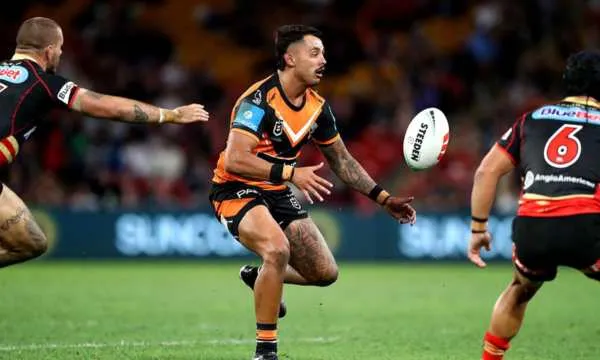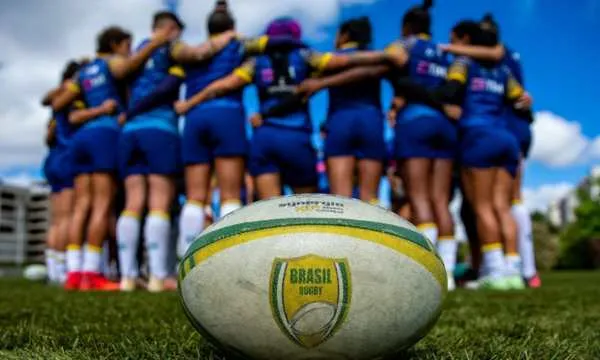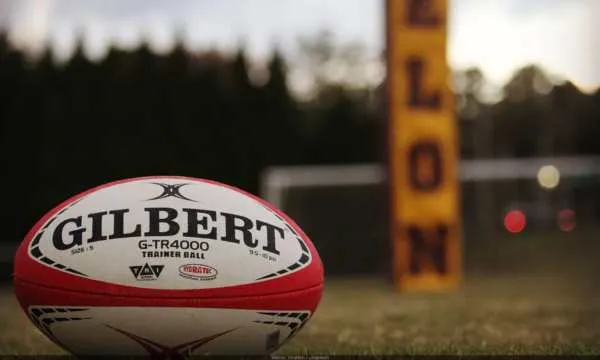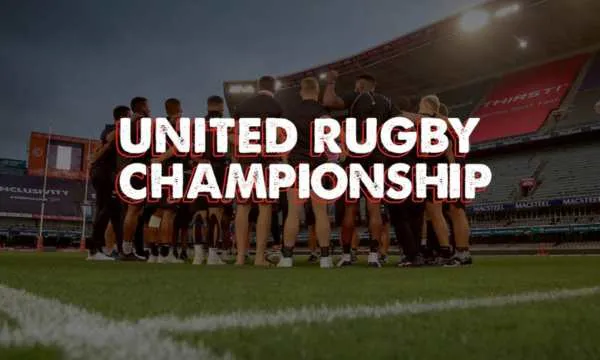Get ready to discover everything about rugby league, from its rules to the greatest players of all time!
Anúncios
The rugby league not just about brute strength, it’s a thrilling display of speed, strategy, and intelligence that captivates millions of fans.
In this article, we’ll explore the core rule that defines the pace of the game, the tactics that separate amateurs from professionals, and the key positions that decide every match.
We’ll also celebrate the icons who transformed rugby league into a global passion.
Get ready to understand why every second counts and how the mix of physical power and tactical brilliance creates an unforgettable spectacle.
The Six-Tackle Rule: The Dynamic that Defines the Game
The beating heart of any rugby league match is undoubtedly the six-tackle rule. Unlike other rugby codes, this rule limits teams to six attempts to advance and score.
Each time a player carrying the ball is tackled by an opponent, one tackle is counted.
This rule creates constant tension and forces teams to progress with purpose, making the game incredibly dynamic.
By the sixth and final tackle, the attacking team must make a crucial strategic decision to avoid losing possession in a bad position.
Usually, they’ll kick the ball deep into enemy territory, trying to trap the opposition or force a mistake.
This system demands efficiency and creativity within a limited window, shaping the fast paced rhythm that defines rugby league.
Understanding this rule is the first step to appreciating the tactical brilliance behind every play.
Offensive and Defensive Strategies: Modern Tactics in Rugby League
In modern rugby league, physical strength must be paired with sharp tactical awareness both in attack and defense.
Offensive strategies are designed to break the opponent’s defensive line using formations known as “shapes.”
In these plays, players run coordinated lines to confuse defenders and open gaps for line breaks. The goal is to move forward effectively within the six-tackle limit.
-
In attack: Teams aim to create numerical superiority on one side using quick passes and decoy runners.
-
In defense: The focus is on line speed moving up fast to pressure the ball carrier and force rushed decisions or poor kicks.
Defensive organization is crucial. Teams often employ a “slide defense,” shifting as a unit across the field to close space and isolate the attacker.
The goal isn’t just to tackle, but to dominate the contact and slow down the opponent’s momentum. Success in rugby league means winning this ongoing tactical battle.
Key Backline Positions and Their Greatest Stars
While the forwards handle the heavy collisions, the backline is where the magic of rugby league happens. These players organize attacks, craft set plays, and score most of the tries.
Their positions demand speed, agility, and vision to exploit the gaps created by the forwards’ hard work.
Without a creative and cohesive backline, no team can compete at the top level.
Three key roles form the tactical core of the team:
-
Halfback (Number 7): The chief playmaker and tactical kicker.
-
Five-Eighth (Number 6): The creative partner of the halfback, skilled in improvisation and line breaks.
-
Fullback (Number 1): The last line of defense and a dangerous attacking weapon who joins the line to create overlaps.
Legends like Andrew Johns, Johnathan Thurston, and Billy Slater redefined these roles, becoming timeless heroes of rugby league.

The Role of the Forwards in Dominating Midfield
If the backs are the artists, the forwards are the engine room of every rugby league team. Their main job is to win the physical battle for territory.
Forwards repeatedly run straight into the defense, gaining meters through strength and determination, while also making most of the tackles. Their work provides the platform for the backs to shine.
Midfield battles often decide the outcome of games. Forwards must absorb contact and keep pushing forward a process known as “hit-ups.”
In defense, their mission is to form a solid wall that stops the opposition’s advance.
Success here wears down the other team and creates openings later in the game. Without forward dominance, no rugby league side can execute its game plan effectively.
The Greatest Icons of Rugby League and Their Legacy
Rugby league has been shaped by generations of legendary players whose names still echo through the sport’s history.
These icons not only dominated on the field but also revolutionized tactics, inspired future athletes, and helped grow the game globally.
Their legacy goes far beyond numbers, it’s about leadership, innovation, and passion.
Wally Lewis, known as “The King,” transformed the five-eighth role with his game control and tactical vision.
Cameron Smith redefined the hooker position, becoming the most capped player in history and one of the sport’s greatest leaders.
These players, and many others, didn’t just play the game, they shaped rugby league, leaving an impact that continues to inspire fans and players around the world.
Understanding the Difference Between Rugby League and Rugby Union
For newcomers, one of the biggest questions is: what’s the difference between rugby league and rugby union?
While both share a common origin, they’ve evolved into two distinct sports with unique rules and playing styles.
Understanding these differences is key to appreciating each code’s appeal.
The main distinction lies in what happens after a tackle. In rugby league, the six-tackle rule creates a faster, more continuous game.
In rugby union, possession is contested after every tackle through rucks and mauls, leading to a more stop start but strategically complex flow.
-
Players: Rugby league has 13 players per team, while union has 15.
-
Flow: League emphasizes speed and completion within six tackles union focuses on contesting possession.
-
Scoring: Point values for tries, conversions, and penalties differ between the two codes.
Conclusion
After exploring the rules, tactics, and great players, it’s clear that rugby league is far more than just a contact sport. It demands a rare mix of strength, speed, endurance, and intelligence.
From the tension of the six-tackle rule to the brilliance of set plays, every element contributes to a thrilling spectacle.
We hope this guide helped you understand the game’s depth and beauty from the forwards’ gritty battles to the backs’ creativity and the legends who shaped its history.
The world of rugby league is vast, passionate, and endlessly exciting and this is just the beginning of your journey.
FAQs
1. How many players are on a rugby league team?
Each rugby league team has 13 players on the field and usually four substitutes on the bench.
2. How are points scored in rugby league?
A try (grounding the ball in the in goal area) is worth 4 points. A conversion kick is worth 2 points, a drop goal 1 point, and a penalty kick 2 points.
3. What is a “knock-on”?
A “knock-on” occurs when a player loses possession and the ball travels forward. The opposing team then receives possession via a scrum.
4. What is the top professional rugby league competition?
The National Rugby League (NRL), based in Australia, is widely regarded as the strongest club competition in the world.


